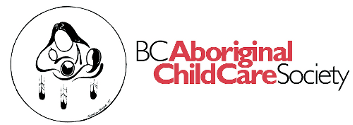Back to the future [electronic resource] : Onowa McIvor, Aliana Parker recreating natural Indigenous language learning environments through language nest early childhood immersion programs /
Material type: ArticlePublication details: 2016Description: 1 online resource (pp. 21-35) : digital fileSubject(s): Language revitalization | Languages -- Study and teaching -- Canada | Mental health and well-being | Language development in childrenOnline resources: Full text
In:
International Journal of Holistic Early Learning and Development Vol. 3 (2016), pp. 21-35Abstract: For a language to have a stable future, children need to be learning it. Immersion for young children is the best method for rapid language regeneration as it can produce new proficient speakers within a few years. Although early childhood language immersion programs, commonly known as language nests, have been recognized internationally as the most successful means available today for language revitalization, this method is not yet well subscribed to in Indigenous Canada. This paper provides a picture of early childhood Indigenous immersion language programming and presents it as one viable solution to the challenge of Indigenous language loss in Canada. In addition, it is hoped that this paper can be a starting point for Indigenous community members interested in immersion early childhood approaches to their children’s health, identity development, and overall wellbeing.
ArticlePublication details: 2016Description: 1 online resource (pp. 21-35) : digital fileSubject(s): Language revitalization | Languages -- Study and teaching -- Canada | Mental health and well-being | Language development in childrenOnline resources: Full text
In:
International Journal of Holistic Early Learning and Development Vol. 3 (2016), pp. 21-35Abstract: For a language to have a stable future, children need to be learning it. Immersion for young children is the best method for rapid language regeneration as it can produce new proficient speakers within a few years. Although early childhood language immersion programs, commonly known as language nests, have been recognized internationally as the most successful means available today for language revitalization, this method is not yet well subscribed to in Indigenous Canada. This paper provides a picture of early childhood Indigenous immersion language programming and presents it as one viable solution to the challenge of Indigenous language loss in Canada. In addition, it is hoped that this paper can be a starting point for Indigenous community members interested in immersion early childhood approaches to their children’s health, identity development, and overall wellbeing.
For a language to have a stable future, children need to be learning it. Immersion for young children is the best method for rapid language regeneration as it can produce new proficient speakers within a few years. Although early childhood language immersion programs, commonly known as language nests, have been recognized internationally as the most successful means available today for language revitalization, this method is not yet well subscribed to in Indigenous Canada. This paper provides a picture of early childhood Indigenous immersion language programming and presents it as one viable solution to the challenge of Indigenous language loss in Canada. In addition, it is hoped that this paper can be a starting point for Indigenous community members interested in immersion early childhood approaches to their children’s health, identity development, and overall wellbeing.

There are no comments on this title.